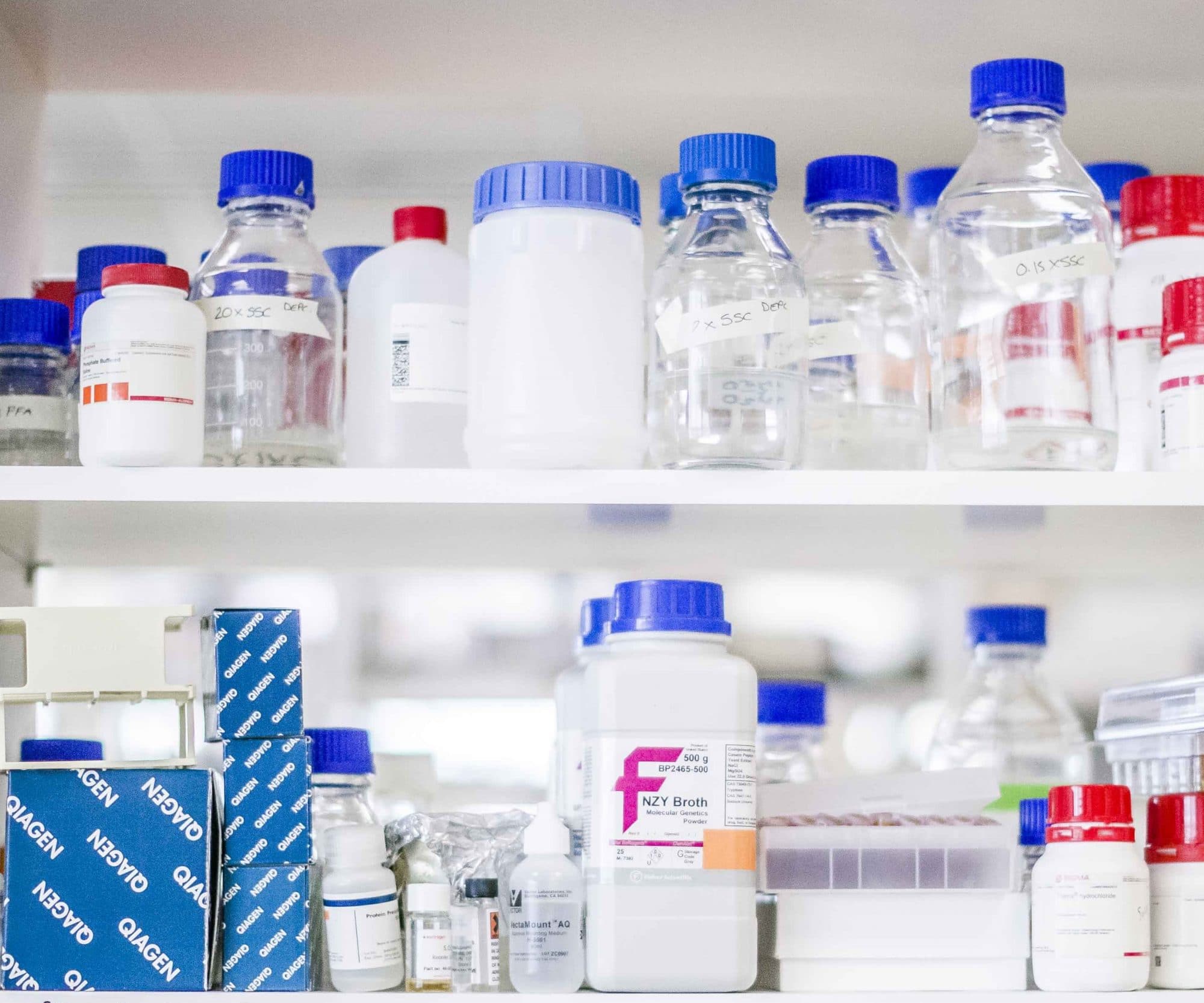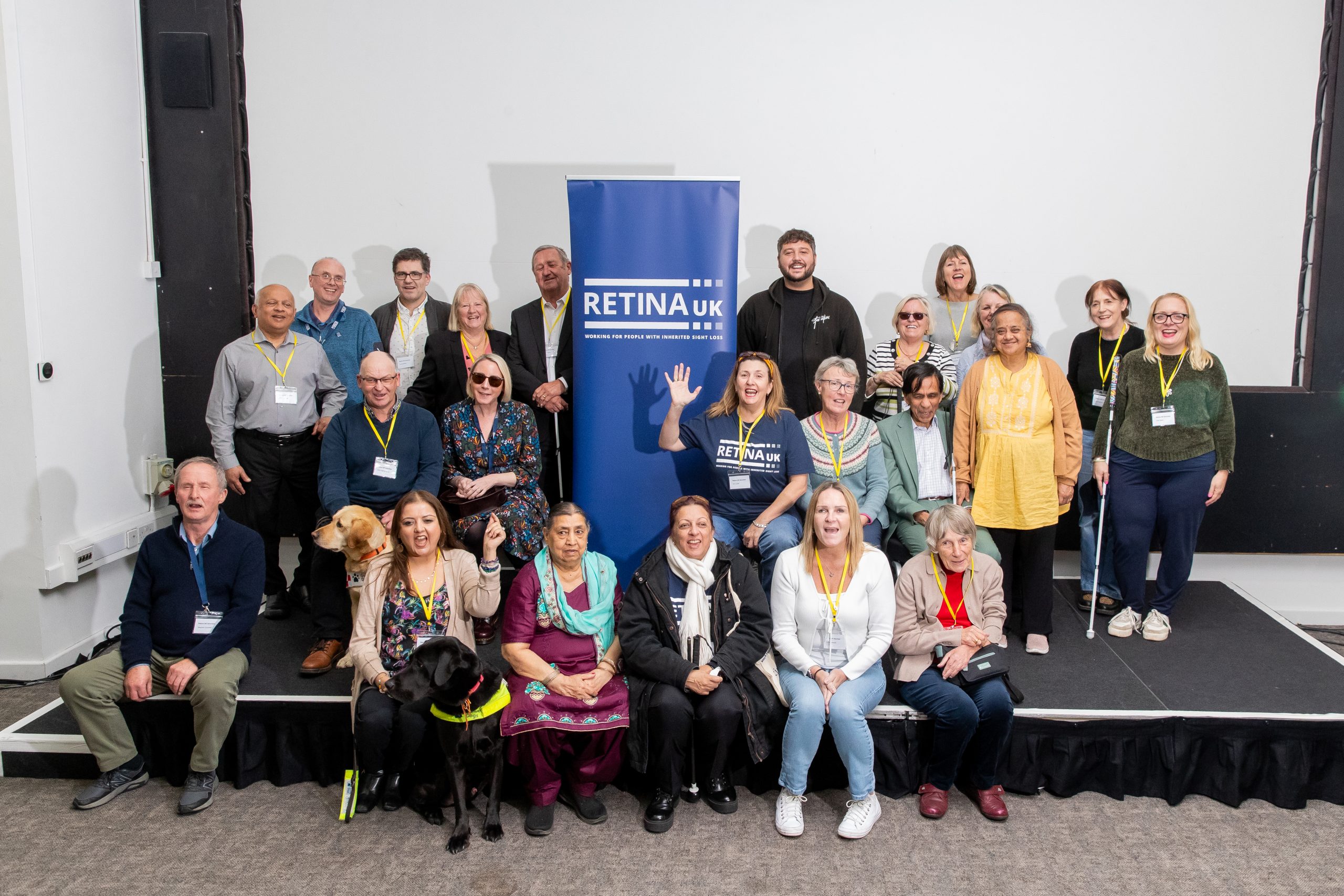It is a rare form of syndromic RP. The condition is characterised by vision loss, hearing loss, loss of sense of smell, neurological problems, abnormal skin texture and heart problems.
Symptoms
Refsum syndrome is characterised by a broad range of symptoms, with significant variability between people including:
- Retinitis pigmentosa (RP) – a degenerative eye condition that affects the photoreceptor cells responsible for capturing images from the visual field. These cells line the back of the eye in the light sensitive region known as the retina. The first symptom of RP is night blindness. Night blindness makes it difficult to see in low light levels. RP then causes a progressive loss of peripheral vision. Peripheral vision loss is often referred to as tunnel vision. Eventually central vision is affected.
- Anosmia – loss of the sense of smell and sometimes taste.
- Hearing loss
- Peripheral polyneuropathy – a term used to describe dysfunction of the nerves outside of the spinal cord. Symptoms of peripheral polyneuropathy may include numbness, burning pain, weakness and loss of reflexes occurring initially at the body extremes (hands or feet).
- Cerebellar ataxia – ataxia is a nerve-derived form of unsteadiness. Cerebellar ataxia is a defect in a specific part of the brain (the cerebellum) which coordinates muscle function. As a result, the brain fails to regulate the body’s posture as well as the strength and directions of movements.
- Skeletal dysplasia – bone abnormalities including shortening or deformity of the tubular bones in the hands and feet. Abnormal growth plates (epiphyseal dysplasia) at the knees, elbows, and shoulders may also be found.
- Ichthyosis – scaliness of the skin which is different from eczema or psoriasis. These symptoms can range from fish-like scaliness of the palms of the hands and soles of the feet to being present on the trunk of the body.
- Pupillary abnormalities – the pupil of the eye is small and does not respond well to light or pupil dilating drugs.
- Cardiac arrythmias – abnormalities with the rhythm of the heart. A rare but serious complication of very high phytanic acid levels which can be a cause of early death in Refsum syndrome.
- Weakness – significant slow-recovering weakness after illness is another feature of this condition.
The impact on an individual of these symptoms can be increased based on their plasma phytanic acid level. Higher levels will increase the severity of symptoms. Phytanic acid accumulates in the fat tissues of patients with Refsum syndrome throughout their lives. This means that even with a strict diet low in phytanic acid, an individual can still have higher levels of plasma phytanic acid throughout their lives due to the release of phytanic acid from their fat cells into their blood.
Causes
Refsum syndrome is a metabolic condition which affects approximately 1 in 1,000,000 people. It is caused by a number of faulty genes (mainly PHYH) which affects the ability to metabolise phytanic acid. Phytanic acid is a type of fat found in certain foods such as dairy products, beef, lamb and some fish. In humans, if phytanic acid is not degraded, it accumulates in nerves, liver and fat. If undiagnosed, Refsum syndrome can be life threatening.
The diagnosis of Refsum syndrome is based on clinical findings and the finding of a raised blood phytanic acid level. Most people with Refsum syndrome have phytanic acid levels 10 to 100 fold above those found in the general population, though a few have lower but still abnormal levels. The diagnosis is typically confirmed through genetic (DNA) testing but, in a few cases, direct measurement of enzyme activities in skin biopsy samples may be required.
Refsum syndrome is always inherited in a recessive pattern, meaning that both a person’s copies of the gene must be faulty for the condition to occur. Find out more at RetinaUK.org.uk/genetics/inheritance-patterns.
Treatment
There are currently two treatment regimes available for Refsum syndrome. The first treatment is a strict diet low in phytanic acid and is used for long-term management. Dietary restriction of phytanic acid intake can help lessen or even resolve ichthyosis (scaliness of the skin), sensory neuropathy and ataxia (a nerve-derived form of unsteadiness). A low phytanic acid diet is suspected to slow the progression of vision and hearing loss as well.
The second treatment is the direct removal of phytanic acid from the blood stream. This is a dialysis type process (plasmapheresis or lipid apheresis) and is typically used in acute management of people hospitalised because of Refsum syndrome where it helps to resolve acute heart arrhythmias or extreme weakness. It may be done on a chronic, regular basis in some patients whose phytanic acid levels do not fall sufficiently on diet.
In addition to the strict diet, patients with Refsum syndrome must try to minimise the acute release of stored phytanic acid from their fat cells. Sickness, rapid weight loss or planned hospital procedures involving fasting (surgery) can mobilise fat as part of the body’s stress response which in turn can release phytanic acid from a patient’s liver or fat stores. Patients with Refsum syndrome should receive guidance from a trained dietician and physician on how to minimise risks of acute phytanic acid release and how to manage the condition.
Refsum syndrome clinics
Refsum and Lipid Clinic
Telephone: 02071884004
Email: [email protected]
Location: Gassiot House outpatient centre, ground floor, St Thomas’ Hospital, Westminster Bridge Road, London, SE1 7EH
Clinical trials
Visit RetinaUK.org.uk/medical-research/joining-the-research-effort for clinical trials information. If you are considering joining a trial always discuss it with your usual ophthalmologist or family doctor first. Participation in a genuine clinical trial will never require payment.
You can also read about possible treatment approaches for retinal disease at RetinaUK.org.uk/medical-research/approaches-to-treatment and the latest news about research at RetinaUK.org.uk/research-news.
Many treatment approaches are specific to a particular gene fault, so it is important that those affected by the disease are referred for genetic testing so that they can access new treatments and clinical trial opportunities.
For support
The Retina UK Helpline provides information, support and signposting for people affected by inherited sight loss as well as healthcare and education professionals.
Contact 0300 111 4000 (9.00am – 5.00pm Monday to Friday and Tuesday and Thursday evenings 5.00pm – 8.00pm) or email [email protected].
Condition-specific information
Visit defeatadultrefsumeverywhere.org for useful information about the diet to manage Refsum disease.
Getting involved in research
Those who join the Retina UK Lived Experience Panel receive an email from us when we are made aware of participation opportunities such as focus groups, surveys and research projects. Sign up at RetinaUK.org.uk/get-involved/lived-experience.









